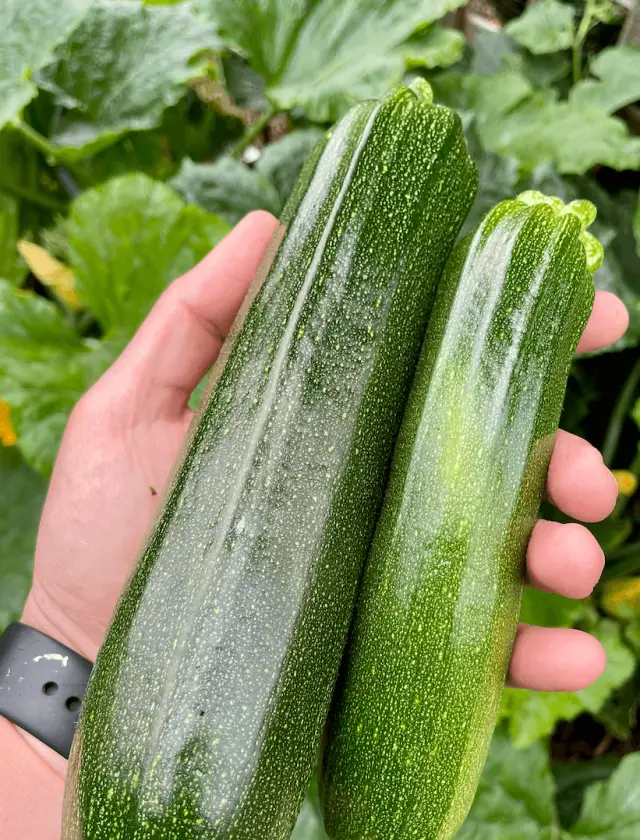How to grow and care for courgettes


Growing courgettes has to be one of the most satisfying crops you can look to grow in your garden, patio or allotment and if you’re looking for tips on how to grow and care for courgettes – you’re in the right place.
There are some fantastic varieties, ranging from your standard courgette like you would see in the supermarket – right through to small globe-like yellow varieties. Depending on the variety, courgettes will grow in bush, trailing, climbing or compact and in a container – there’s really no excuse not to grow this allotment staple. You just might end up giving some away the plant is so prolific.
When it comes to growing and caring for courgettes, you’ll be glad to know that they are pretty hardy and prolific germinators – making them a great vegetable if you’re just starting out. They’re also extremely versatile when it comes to uses in the kitchen. Perfect in stir-fries sliced, or if you want to get adventurous you could stuff and deep fry the flowers — there are even courgette brownie recipes.
Sowing
As we have already mentioned, courgettes are easy to grow and you’re best starting off planting the seeds in May in a greenhouse or windowsill propagator – giving you the best chance for a nice early crop. The seeds are large and flat so easy to handle, when sowing indoors place them 1cm deep in trays or pots and ensure you sow them facing down rather than flat to avoid the seeds going mouldy.

If you’re looking for a later crop, it’s possible to sow courgettes direct outside after the first frosts have passed or ideally a bit later in early to mid-June. Sowing seeds directly in well-prepared soil and where you plan the plants to grow – though be prepared for fewer seeds to germinate outside as they much prefer starting off indoors.
Growing in Containers
If you’re looking to start your courgette growing journey in containers, then you’ll be glad to know that courgettes grow very well in pots and can be grown on patios, balconies or any other small space. They are sprawling and climbing plants though so make sure you pick a good large pot upwards of 10 litres and plant in compost rich in organic matter.
Caring for Courgettes
Once you have planted out, Courgettes will normally grow extremely well, depending on the variety. If you sowed indoors early on or just want to avoid any surprises, then plant out under cloches for the first couple of weeks or until that last frost has certainly passed. Courgettes are thirsty plants and will require plenty of watering and will certainly appreciate a weekly feed using standard tomato feed to help give them a boost and provide a plentiful harvest.
Courgettes are insect-pollinated and produce large yellow flowers that attract plenty of our natural bees, flies and other pollinators in order to go on and produce courgettes. Sometimes though, you may be lacking in pollinators or you’ve noticed that fruit is not appearing and in that case, you can hand pollinate. To do so, take a male flower (the ones without a young fruit at the base) and strip away the petals so that the stamen is left – you can then use this to pollinate the female flowers (with small fruit at the base) by inserting it into each one.

Common Problems
Slugs & Snails
Our favourite garden pest loves a courgette, when the plants are young they will go for the fresh stems and leaves, easily devouring an entire plant or two if you’re not careful. When fully grown, the pests will also happily gnaw on the vegetables the plant produces as well – so try and pick them as soon as possible to protect against the slimy critters.

We’d always recommend against slug pellets if you can help it and go for a more natural way to drive away slugs and snails. We’ve seen great results with copper tape around pots, crushed egg shells or a trap made of a buried jar and some old beer.
Powdery Mildew
The second most common issue you will find with courgettes is mildew on the large leaves towards the end of the growing season. This is mainly caused by overcrowding, lack of moisture and water being held on the leaves after watering.
Our best suggestions to avoid this would be to keep an even watering schedule around your courgettes to keep moisture topped up while avoiding the foliage when watering and ideally mulching the base to help retain water.
Cucumber Mosaic Virus
This one can cause some major issues to your crop and while it’s often contained to one or two plants, it’s the one that cannot be saved like the other problems above. You will spot this virus with stunted growth in your plants and the namesake yellow mosaic pattern on leaves.
There is no way to cure your plants of this disease, so if it’s spotted in your patch – remove the unhealthy plants immediately and make sure that you avoid touching any healthy plants after being in contact with the damaged ones as you may spread the disease.
Harvesting
Once they start producing crops, you will discover that courgettes are prolific vegetables and if you plant in May then late July or early August is when you should expect to start picking. Once the plant starts to produce crops, you should pick constantly and when the fruit is around 10cm long – cut clean at the stem with a sharp knife. Left any longer and courgettes will continue to grow large and round, forming what we know as marrows. While these are still edible and can be roasted to great effect, the taste is more bitter and not favourable to most – therefore we suggest sticking to the smaller 10cm fruit that tastes perfect roasted, grilled or included in a summer stew.






